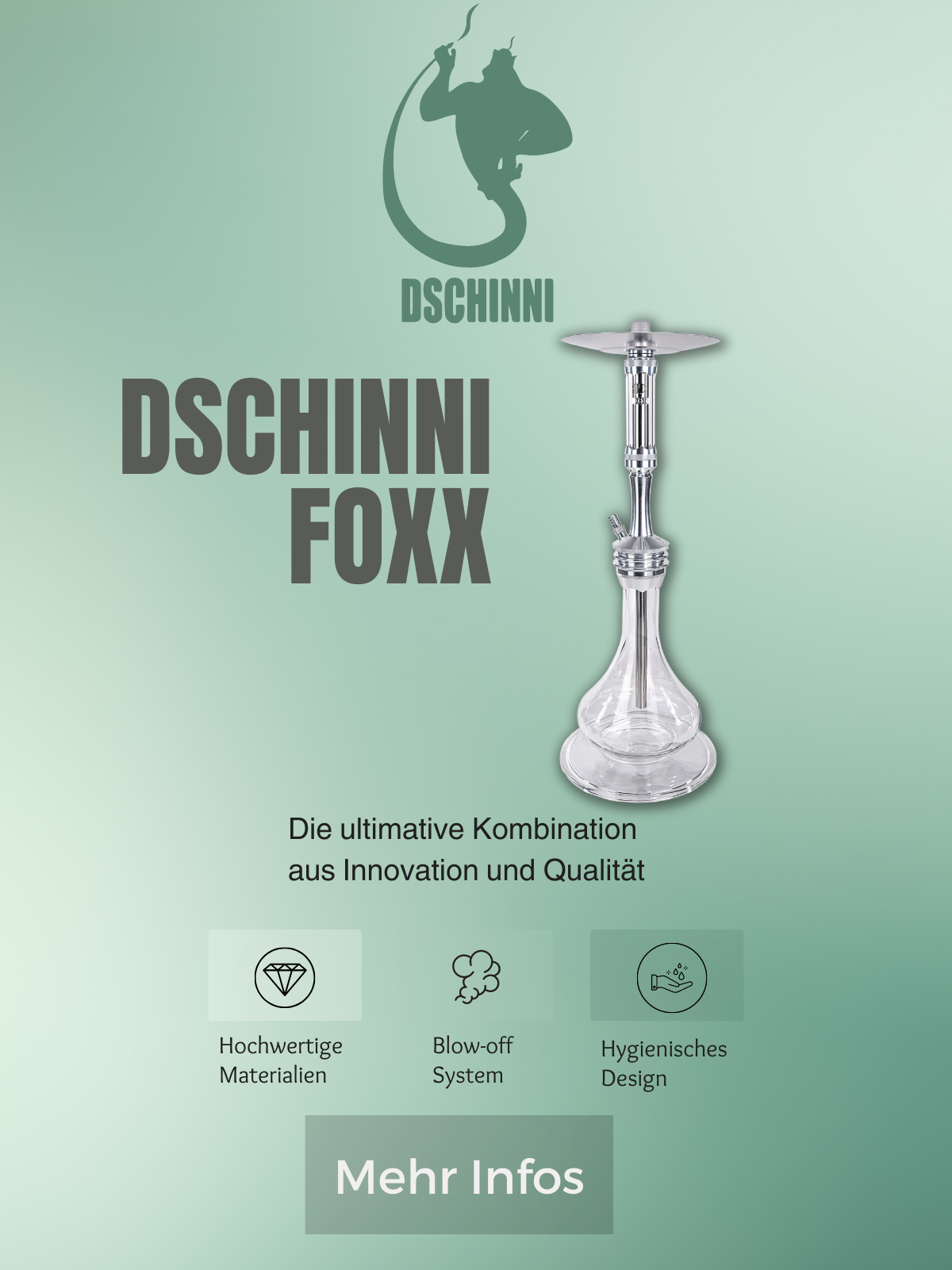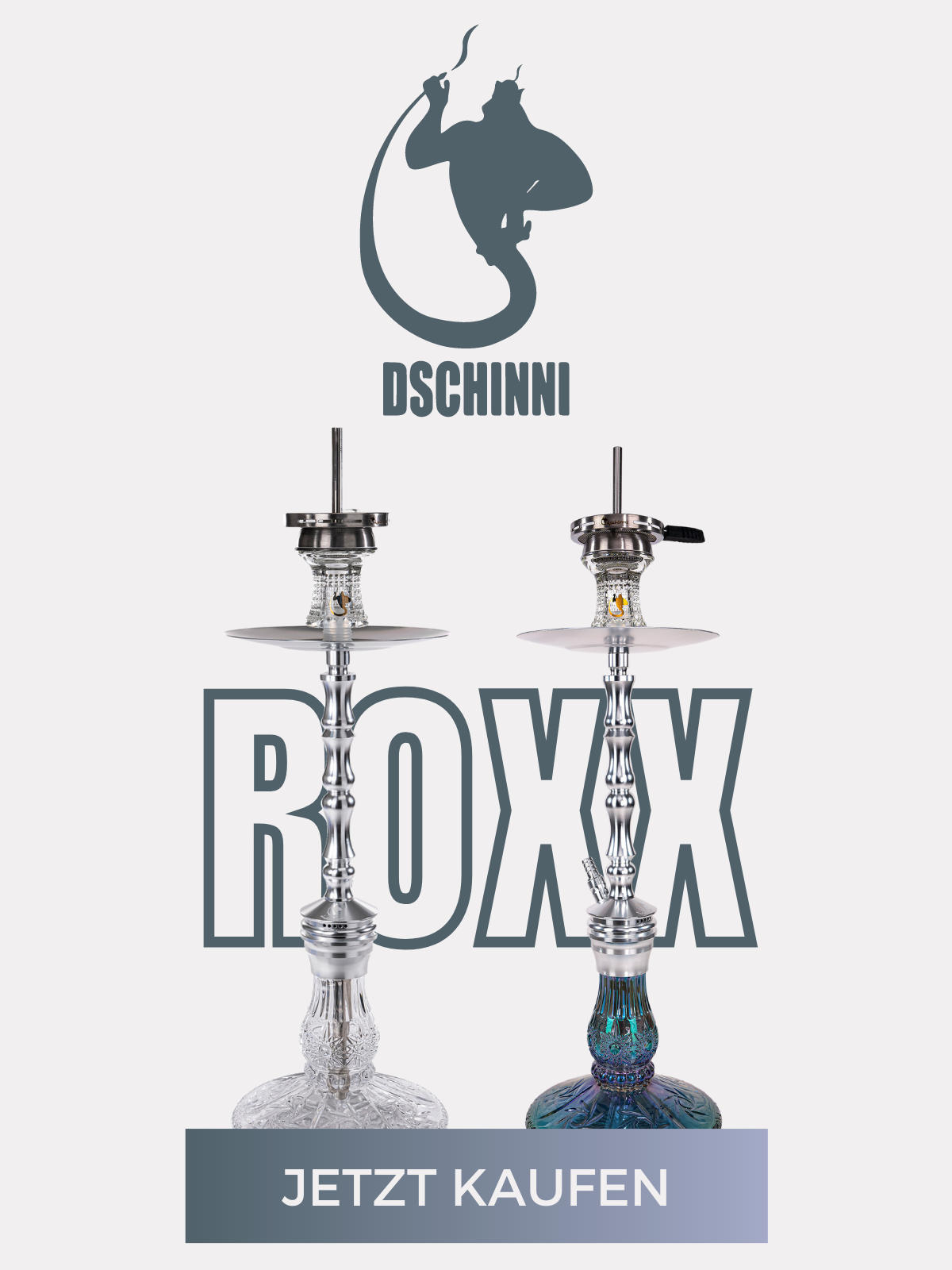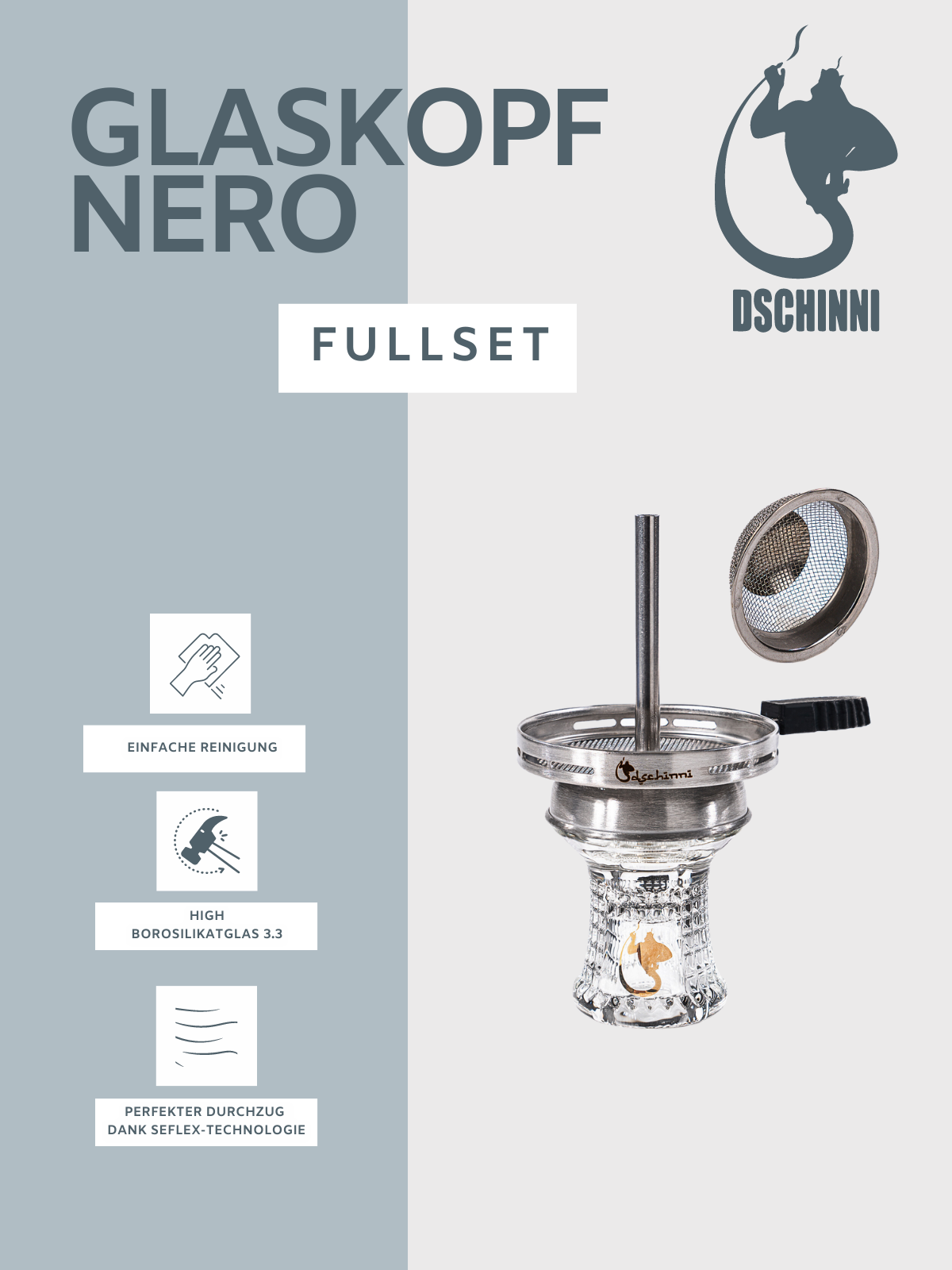There is currently one topic in particular that is circulating in shisha circles on social networks: Russian shishas. With their extravagant blow-out valves, they are definitely an eye-catcher. But what about the material and performance of the expensive plug-in pipes from Russia? Can they keep up with or even surpass the classic shishas ? We light up the darkness.
Classic shishas vs. Russian shishas
Plug-in pipes have disappeared from our Dschinni Shop for years as our production has developed and we use more innovative solutions such as threads or click locks for our shishas. Plug-in pipes can actually be traced back to outdated production methods, as is the case, for example, with old double apple shishas from well-known Arabic shisha manufacturers. Since the appropriate technical aids were lacking at the time, it was not possible to cut threads for the water pipes and thus precisely connect two parts made of glass and metal. Instead, shisha manufacturers resorted to making a metal block with a certain diameter and inserting it into the neck of the bottle as an extension. The tolerances, i.e. the deviations that occur between the bottle neck and the block, which arise because glass is easily deformable due to its material properties and therefore cannot always be reproduced identically, were compensated for with tape or sports tape. Instead of sports tape, newer pipes use silicone seals, but these usually have to be attached with a lot of force and cannot be screwed together as smoothly and easily as is the case with a thread.
Why are Russian shishas still based on this production technology?
This is mainly due to the fact that economic sanctions were imposed on Russia a few years ago, which made the import of Russian products, including shishas , difficult and, above all, very expensive. To compensate for this, the shishas had to be as cheap as possible but still look good. Since the production of plug-in pipes is much less cost-intensive than that of hookahs with threads or click closures, this was the case. But it's not just the closure system that saves on Russian shishas, but also the remaining materials. They are often made largely of plastic or epoxy resin, a synthetic resin that can be converted into plastic through a chemical process. Stainless steel elements are also occasionally used to prevent contact between these materials and the smoke. The processed glass also leaves a lot to be desired. Inexpensive Chinese soft glass is usually used here, which does not necessarily promise a long service life. Only the beautiful blow-out valves are often really of quality and, in our opinion, an attempt to distract from the other workmanship.
Shisha made in Russia: is the price justified?
The Russian shishas are anything but cheap, even though the production and materials actually suggest otherwise. The place of manufacture, Russia, also needs to be questioned in many cases, because anyone who knows anything about production will quickly find out that many of the “Russian shishas” are produced in China. The only advantages that Russian hookahs bring with them are the exceptional blow-out valves and the arbitrary interchangeability of the universal glasses. If the bowl breaks, a suitable replacement can be quickly found. But that doesn't justify the price that is otherwise only set for high-class shishas.











Leave a comment
All comments are moderated before being published.
This site is protected by reCAPTCHA and the Google Privacy Policy and Terms of Service apply.